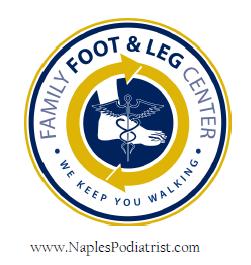Before babies starts walking, they don't need shoes. In fact, supportive shoes like hard-soled Mary Janes may actually get in the way of your child's developing mobility. Socks, booties, and soft-soled baby shoes are useful for warmth, but bare feet are fine, too. In actuality their feet are very adaptable to the ground, whether it is carpeted or wood and tile. And early on it allows their proprioceptive feedback to allow them to balance easier and develop more readily in the very early stages without shoes.

Once your child takes those first steps, it's time for a pair of real shoes. Unlike "baby shoes," which are more like slippers, first shoes will have a flexible, nonskid sole (probably rubber) and a more substantial upper. Shoes protect kids' feet outdoors and anywhere else that could be hazardous – a splintery surface, for example.
Note: Your child's foot is still developing, so it won't look (or act) like an adult foot. If your child still has a padding of baby fat under the arches, for example, she might appear a bit flat-footed. Or she may have a tendency to turn her toes in when she walks, called in-toeing or toeing in.Indoors (and outdoors on safe surfaces, such as sand), it's still a good idea to let new walkers wear soft baby shoes or socks. Your child can even go barefoot, if it's warm enough. Toddling around with feet bare or lightly covered actually helps little ones build strength and coordination in their legs and feet.
Mention any concerns to your child's doctor. It's easier to correct foot problems when your child is younger.
What to look for when buying
- Choose a breathable, lightweight material. Soft leather or cloth is best. Avoid stiff leather shoes, which can hinder foot development, and synthetics, which don't breathe.
- Bend the soles. They should be flexible and gripping, not smooth and stiff. A nonskid rubber sole with ridges will offer good traction.
- Check the fit. Have your child try on the shoes and stand up. There should be just enough room to squeeze your pinky between your child's heel and the heel of the shoe, and a full thumb-width between the end of your child's longest toe and the front of the shoe. The shoe should provide just enough wiggle room without being too big. Because baby feet grow quickly, it's a good idea to check every month to make sure the shoes still fit.
- Give it a squeeze. If the shoe is made of soft fabric, try to grab some of the material on the top of the foot when your child is wearing them. If you can't, the shoes might be too tight.
- Shop later in the day. Babies' feet swell and are often bigger at the end of the day. Shoes purchased in the morning might feel tight in the evening so usually try shoes on before dinner before you buy.
- Look for problem spots. Your baby's shoes shouldn't need any breaking in. Let your child toddle around indoors wearing the shoes, then take them off and look for any irritated areas on your child's foot which could be red areas or blisters, and in more rare cases even a callus formation can occur but this is not common.
- Make the choice: laces versus Velcro. Velcro fasteners make it easier to get shoes on and off, and you won't have to worry about retying laces all day. But a child may figure out how to remove his shoes and take them off when you wish he wouldn't! If you choose shoes with laces, make sure they're long enough to tie into double knots, so they won't come undone as often.
What it's going to cost you
Simple baby shoes can cost as little as $15 to $20. Fancier shoes, of course, can cost a lot more. And remember any foot concerns can be addressed at any age here at FFLC.
DR TIMM



